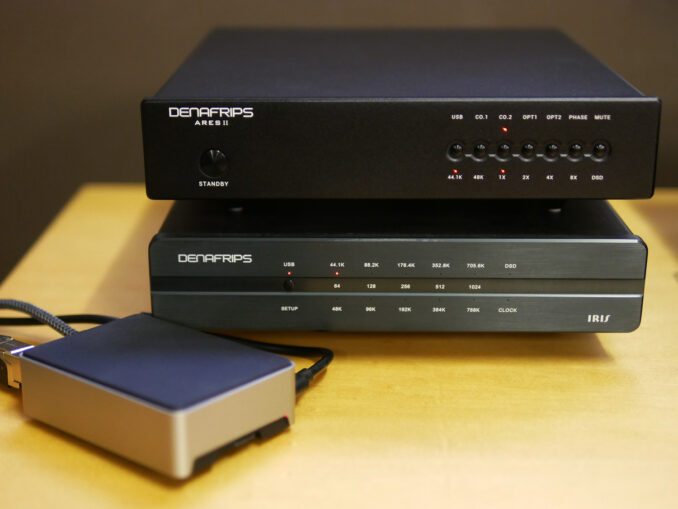
All USB audio sources are not created equal, and all USB DACs are not created equal. This makes making any kind of sweeping generalizations about the effectiveness of things that sit between point A, the USB audio source, e.g. a Raspberry Pi, and Point B, a DAC, damn near impossible.
As is the case with any review, but even more so because of these points, we need to be careful about sticking to what we know, versus extrapolation.
“The ABC clearly improved the sound in my system, which uses a computer as source and a DAC from XYZ, so I can highly recommend the ABC for anyone looking to improve the sound their USB-based DAC.”
That’s extrapolation in erroneous, which isn’t Latin but it does refer to drawing unfounded conclusions based on a specific scenario.
All DACs are not created equal, especially when it comes to dealing with noise, jitter and USB. For example, the Holo Audio May DAC (see review) was run through its measured paces by John Atkinson at Stereophile where he found, “In almost every way, the HoloAudio May (Level 3) is the best-measuring D/A processor I have encountered”. According to GoldenSound’s measurements and his interpretation thereof, the May DAC’s FIFO buffer did a great job of rejecting word-clock jitter. I would assume, based on its measured performance and my listening impressions, that the Holo May DAC may not need a DDC like the IRIS since it does such a great job with USB all on its own. [footnote 2]
Here’s a related passage from an article titled Digital Interfacing Connections & Clocking For Digital Audio from SoundOnSound:
Where jitter does become significant is where the signal is being converted between the analogue and digital domains. Timing variations here will result in samples being measured or reconstructed at the wrong moment in time, and that equates to noise modulation or low-level tonal artefacts, and to stereo image instabilities.
These same timing variations can effect the conversion between the digital and analog domains.
Ideally, a D-A converter should have an external reference clock input to ensure that it can convert the signal from a very stable clock rather than the jittery embedded clock from its input signal. However, very few do. Instead, a very effective solution is to isolate the incoming embedded clock from the conversion clock using a floating buffer or sample rate converter.

The Denafrips IRIS USB Digital to Digital Converter’s (DDC) raison d’etre
The purpose of the IRIS USB DDC is to remove noise and jitter from the USB audio signal, and send out the freshly scrubbed and re-clocked bits through its I2S over HDMI (LVDS Standard) or RJ45 (LVCMOS Standard), S/PDIF (Coax and Toslink), and AES/EBU outputs. The IRIS also includes dual BNC inputs (45.1548MHz and 49.152Mhz) for use with the Denafrips TERMINATOR-PLUS DAC. IRIS supports PCM resolutions up to 24-bit/768kHz, and offers native processing of DSD up to DSD1024.

According to the company, this bit-clean drive-through is accomplished by a number of methods that include DSP using an ARM-based microprocessor from STMicroelectronics, FIFO buffering and re-clocking the signal using the IRIS’ internal FEMTO crystal oscillators, and Denafrips further isolates the outputs from any internal noise by employing optocouplers between the input and output circuits. As we all know, electrical noise doesn’t travel over light. There are 8 sets of Ultra Low Noise, Precision Linear Power Regulars along with an oversized O-Core Transformer to deliver clean power to all of this processing.

It’s worth noting that the IRIS sits in the entry position of the Denafrips DDC line, below the HERMES ($1,282) and GAIA ($1,735). These costlier products mainly add costlier clocks and cases, which improves overall performance, according to the company.
The IRIS comes wrapped in a black metal alloy, with a black aluminum faceplate. The front panel houses a single button that acts as output selector and Setup to turn the front panel’s red LEDs on or off. There is no power button to be found on the IRIS, which is shorthand for just leave it on. Those crystal FEMTO clocks apparently like to cook.
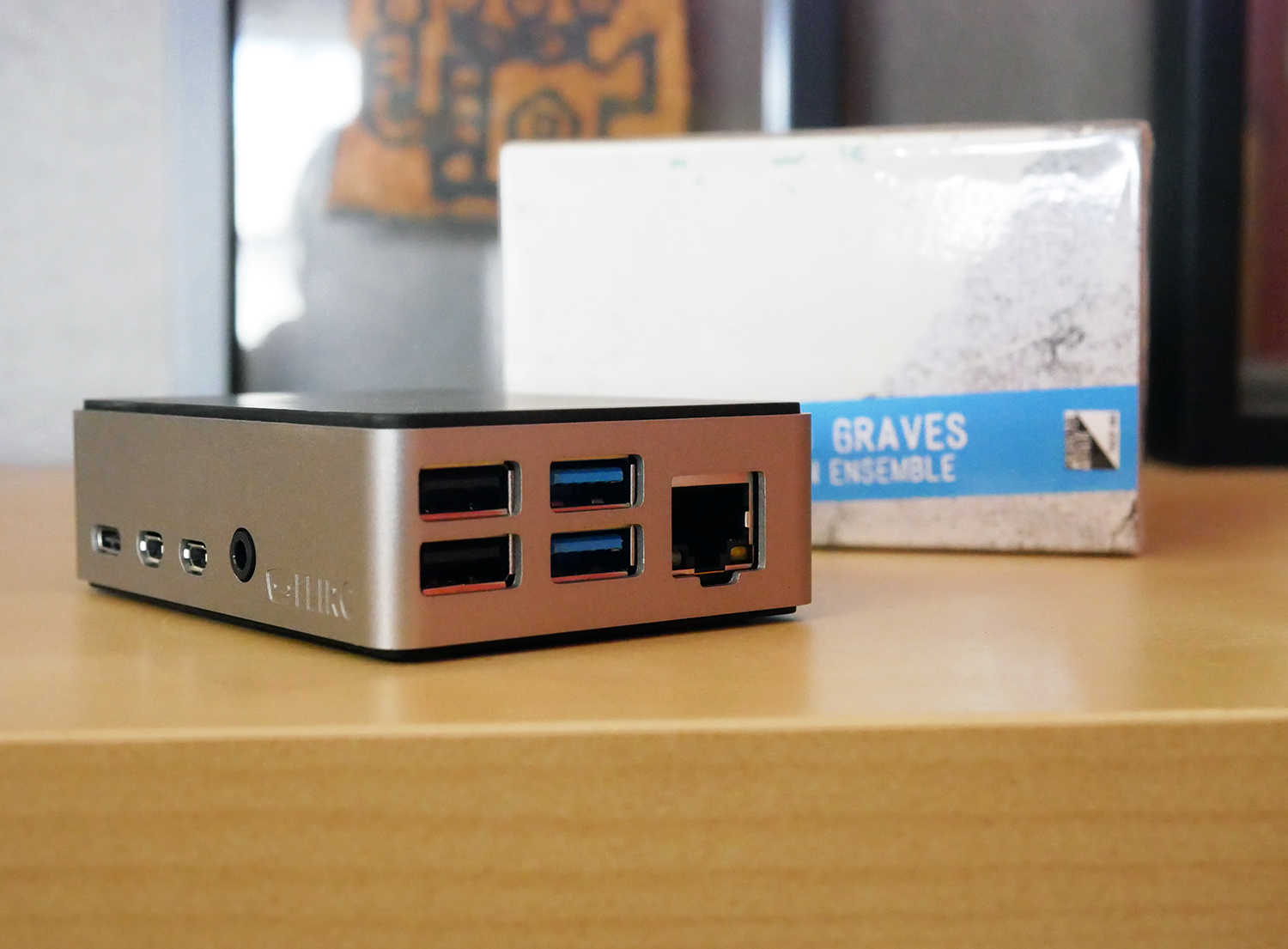
The Big Question
My interest in the Denafrips IRIS was single-minded — can it turn a bog standard, $70 all-in Raspberry Pi 4 (see review), into a good-sounding server. As it stands, I would rate the Pi as an OK USB server on its own, so if you’re shooting for OK music reproduction, it’s all you’ll need. If you want better, read on.
The system in play for the IRIS review consisted of the GoldenEar Triton Reference Towers powered by a few different amps including the Cambridge Edge A, Schiit Ragnarok 2 Nexus Integrated Amplifier, and the lovely little SAC Thailand Minute EL84 Integrated. Yea, that little Minute can actually drive the Triton Towers. More on that in the upcoming review of the Tritons (soon-ish).

IRIS Works
Here’s what I did to test IRIS. I used the bog standard Raspberry Pi 4’s USB output and a length of AudioQuest Diamond USB cable running into IRIS, and then outputting, via AES or Coax depending on the DAC, to the Denafrips ARES II DAC (Coax), the Cambridge Audio DacMagic 200M (Coax), the Schiit Bifrost Multibit DAC (Coax), and the Denafrips PONTUS II DAC (AES) [footnote 1].
In each case, there was a clear, Are we clear? Crystal, improvement in sound quality when the Denafrips IRIS was in the system doing its thing, as compared to going straight out of the Pi via USB. While these sonic improvements varied in terms of degree according to the DAC, better was simply better in every case.
As I pointed out in my recent review of the stellar PS Audio PerfectWave SACD transport, we don’t really know what noise in digital to analog systems sounds like until we’ve not heard it. The signal coming out of the IRIS made clear improvements to overall system dynamics, transparency, and resolution regardless of the accompanying DAC. Comparing USB out of the Pi to Coax and AES out of the IRIS, was akin to someone wiping Vaseline off of a camera lens, I’m dating myself, in that music sounded clearer, as if there was less stuff getting in the way between me and my digital music with the IRIS in use. Less haze, more color, more contrast.
Let’s get specific.
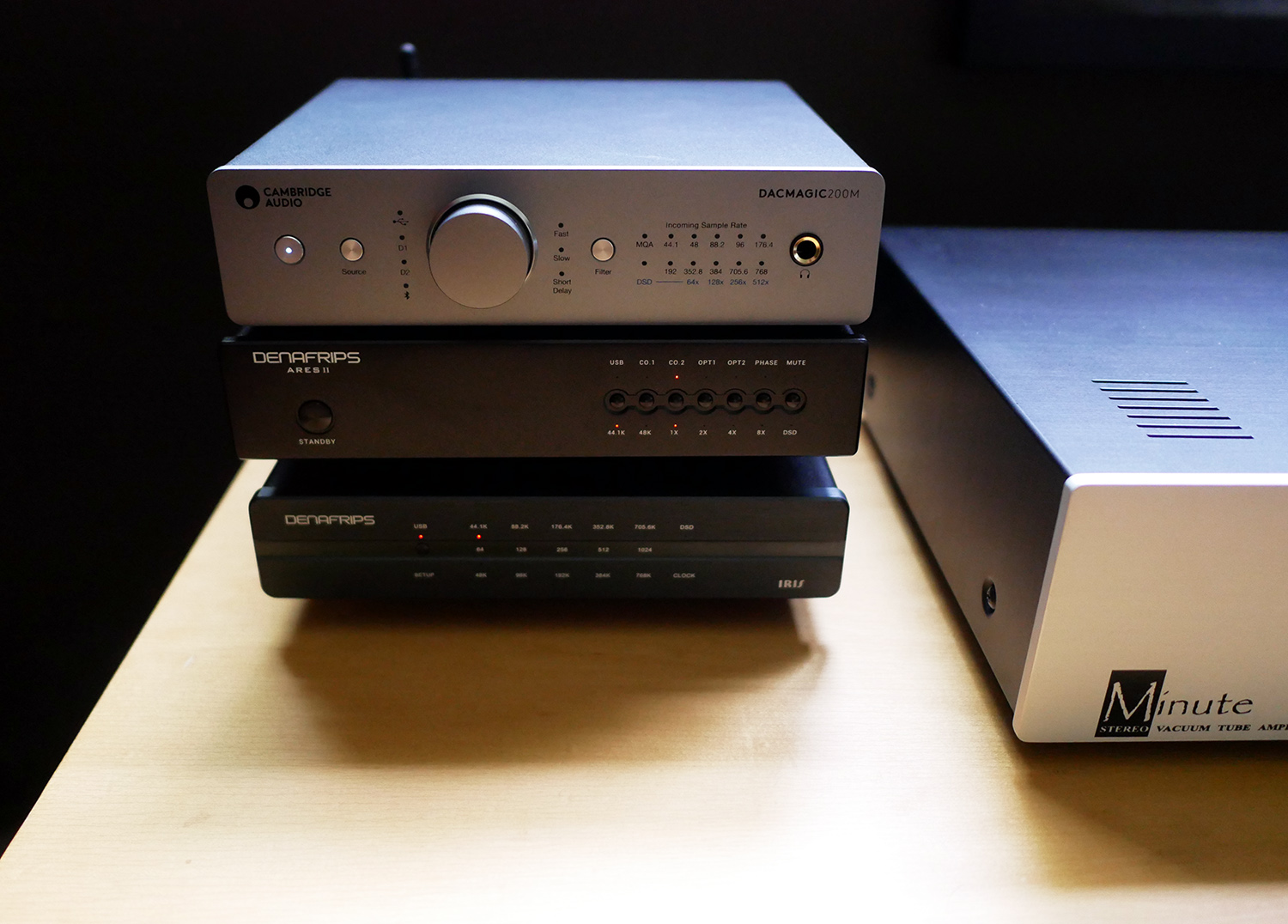
“Lady Jane” from the Rolling Stones Flowers (24-bit/176.4 kHz download) is a great song and a good track for testing things like tone, texture, and resolution. Playing from the Pi directly into the Denafrips ARES II DAC sounded, at first, really nice with Mick Jaeger’s vocals accompanied by acoustic guitar sounding nice and fat and present. But, when the Jack Nitzsche joins on harpsichord, things got muddy. I’ve been listening to this song for ages, on countless systems, so I know what it can sound like. And the Pi 4/ARES II combo was not giving me “Lady Jane” at her best. Inserting the IRIS into the picture snapped things back into proper focus, while also adding a more differentiation between each instruments distinct voice. Overall, clearer, crisper, more tone color, and a more defined and focused sound image thanks to IRIS.

With the Denafrips PONTUS II DAC in the hot seat, the differences between running direct from the Pi and through the IRIS were also apparent. Listening to Sharon Von Etten’s tasty take on Karen Dalton’s “Remembering Mountains”, the Pi version sounded less refined and more amorphous than the IRIS version. When the bass and the rest of the band join in, they sounded a bit lumped together through the Pi, whereas the IRIS pulled things apart, allowing for an easier time following who was doing what, and when. While not as dramatic a difference as I heard with the ARES, the IRIS offered a clear improvement with the PONTUS II.

The Schiit BiFrost Multibit DAC fared about as well as the ARES II. Streaming “Canción Mixteca” as sung by Harry Dean Stanton from Ry Cooder’s Paris, Texas soundtrack — a film I need a few more years before I can see it again because its just so damned sad — sounded lovely, if plump and a tad fuzzy when the Pi was doing the serving. Inserting IRIS into the mix was like putting your glasses on, with Cooder’s guitar and Stanton’s voice coming into sharper focus. The IRIS also brought back more of the body and color I’ve come to associate with this fine sounding, beautiful, and so damned sad folk song.

The Cambridge DacMagic 200M threw an interesting curve ball into the mix. Using the SAC Thailand Minute EL84 Integrated, the DacMagic 200M, when connected to the Pi via USB, emitted noise, that found its was into the Minute and out of the Triton Towers in the form a single, high frequency tone. Using IRIS and going out to the DacMagic’s Coax input solved this problem. I’ll say two things — the little Minute was picking up radiated RFI which is not good news for the little Minute. The Cambridge DacMagic was emitting RFI when connected to the Pi via USB, which isn’t such great news, either.
Switching over to the Schiit Ragnarok 2 Nexus Integrated Amplifier solved this different kind of USB noise problem. I cued up “Meet Me In The Morning” from (one of) Dylan’s masterpiece that is Blood On The Tracks and liked what I heard. It sounded, fine. With IRIS in the mix, “Meet Me In The Morning” sounded a hell of a lot better, with Dylan’s guitar cutting the air with sharper focus, more refinement, and a richer tone, while his voice carried more weight and emotion. More like I’m used to experiencing “Meet Me In The Morning”. Within the context of the DACs used for this review, the DacMagic benefited the most from the IRIS, where it made the most dramatic improvement over all.
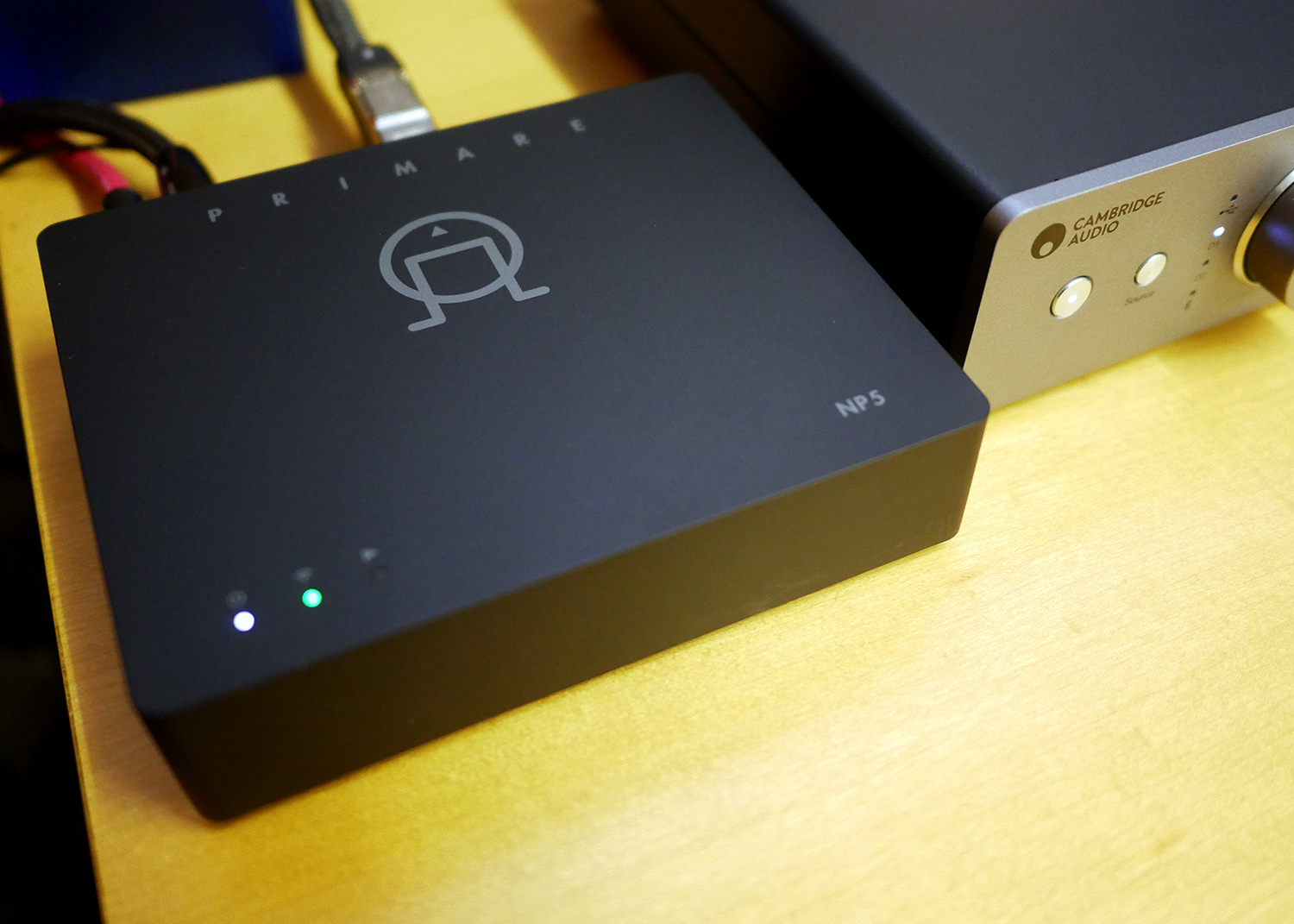
The Primare Prisma NP5 Network Player (see review) makes for an interesting, if not perfect, comparison. It comes in at $600 on the nose, or very nearly the same price as the Pi 4 + IRIS combo. In brief, the NP5 is a Roon-Ready streamer, offering Ethernet and USB inputs, and 24-bit/192kHz max S/PDIF outputs (Coax or Toslink). In terms of connectivity options, the IRIS wins hands down.
For this comparison, I used the NP5’s Ethernet input and Coax output to the Cambridge DacMagic. Head to head, I give the edge to the IRIS which delivered music with more clarity, color, and weight. We are not talking about a dramatic difference, but longer term listening made the move from the IRIS to the Primare feel like I was missing something I preferred.
Summing Up
I would suggest thinking about digital to digital converters, servers, and network players/streamers, as being more akin to infrastructure or plumbing, than hifi proper. The reason being, the lion’s share of your hard earned dough is better spent on things like DACs, amplifiers, and speakers because these things will have a much greater impact on the sound of your music.
In other words, the IRIS cannot turn a Cambridge DacMagic into a Denafrips ARES II. While its good, its not magic. The ARES II is simply a much better sounding, and more costly, DAC. At the risk of extrapolation in erroneous, I would recommend spending more on your DAC than on a DDC. How much more depends on the DAC. The Raspberry Pi + Denafrips IRIS + Denafrips ARES II makes for a pretty stunning digital solution for about $1375 in total (+ cables).
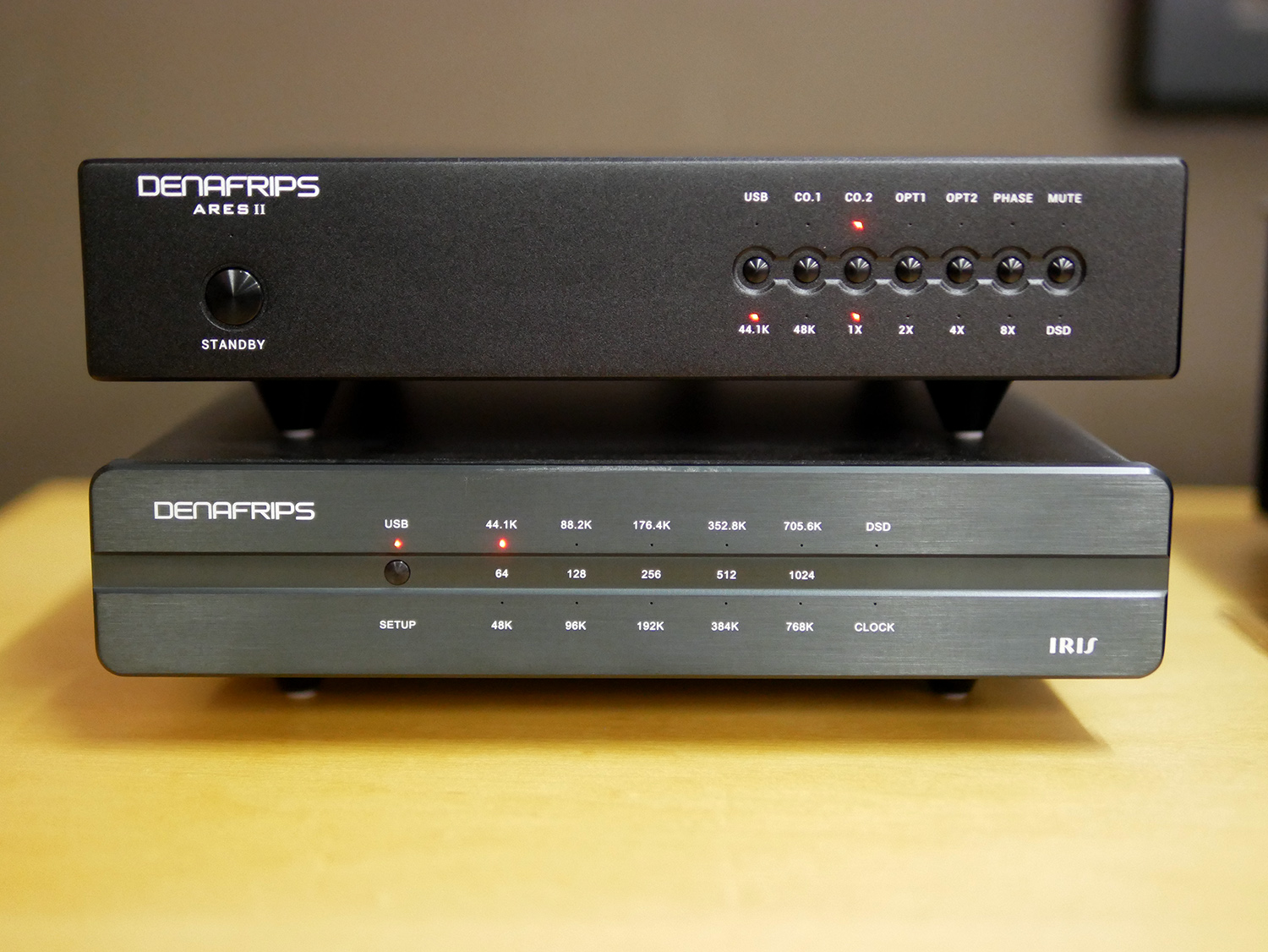
Hello, Better
Once you’ve heard better, it’s hard to go back. The Denafrips IRIS offered obvious improvements with each of the DACs used in this review, turning the Raspberry Pi’s otherwise not very good sounding USB output into a very capable piece of networked hifi’s plumbing. While the degree of better varied, when it comes to connecting to music, I find better to be worth it.
1. I’ll talk about using the IRIS’s I2S output into the PONTUS II’s I2S input, in PONTUS review. Stay tuned.
2. GoldenSound also reviewed a number of DDCs, including the IRIS, and his video review is worth the watch, especially if you interested in a $200 Pi-based streaming solution with AES output.
Company Website: Denafrips
Distributor’s Website: Vinshine Audio
Denafrips IRIS USB Digital To Digital Converter
Price: $526.00
| Description | Parameters |
|---|---|
| D/D Converter | Proprietary FPGA DSP Processing Architecture |
| FIFO Buffer and Reclock with Internal Crystal | |
| FEMTO Crystal Oscillator | |
| Optical Isolated All Digital Input Interfaces | |
| Proprietary USB Audio Solution via STM32F446 Advanced AMR Based MCU | |
| Licensed Thesycon USB Driver For Windows Platform | |
| Driverless On Mac & Linux | |
| External Clocks Input Supported | |
| DSD | DSD64-DoP On All Output |
| Upto DSD512 On USB Input & I²S Output | |
| PCM | 24bits / 44.1, 48, 88.2, 96, 176.4, 192KHz On All Output |
| Upto 768kHz On USB Input & I²S Output | |
| Digital Input | USB |
| External Clock Input | 45.1548MHz |
| 49.152Mhz | |
| Digital Output | Coax SPDIF via RCA |
| TOSLink x 1 | |
| AES/EBU x 1 | |
| I²S HDMI LVDS Standard | |
| I²S RJ45 LVCMOS Standard | |
| AC Power Requirement | 100-240VAC, 50/60Hz (Worldwide Voltage, Manual Selector) |
| Power Consumption | ≤20W |
| Dimension | 220W x 250D x 44H mm (Feet +18mm) |
| Weight | 3.5 Kg |
| Color | Black |
| Warranty | 36 Months |

